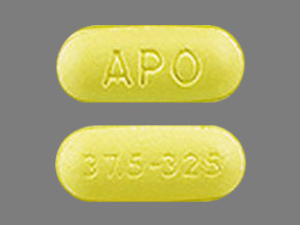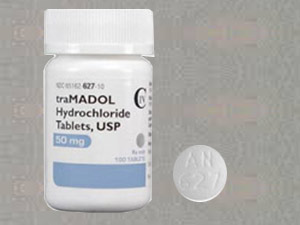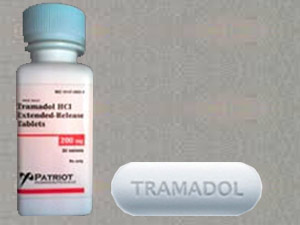

Tramadol 50mg
$204.00 – $649.00Price range: $204.00 through $649.00
Payment Methods:
Description
Cheap ramadol 50mg For Sale
Tramadol 50mg, a low-dose formulation of the centrally acting analgesic, plays a significant role in the management of moderate pain in many countries. In Brazil, a nation with a complex healthcare landscape and evolving digital markets, Tramadol 50 mg is widely prescribed as part of multifaceted pain management strategies. The clinical use of Tramadol in Brazil not only reflects its status as an essential medication for pain relief but also highlights issues related to drug accessibility, regulatory control, and the impact of digital commerce. Over recent years, Brazil’s diverse socioeconomic environment has led to increased discussions both in the medical community and on digital platforms concerning prescription medications.
The purpose of this article is to examine Tramadol 50 mg within the Brazilian context—from its clinical applications and history to regulatory frameworks and the dynamics of online marketing. In parallel, researchers have observed that digital platforms use transactional keywords to capture searches related to prescription drugs. In this document, we integrate 70 transactional keywords related to Tramadol 50 mg, offering insights into the digital behavior of consumers while emphasizing that these terms are presented strictly for academic and market research purposes.
In the sections that follow, we delve into the historical background and pharmacological basis of Tramadol, discuss its clinical applications and dosing issues in Brazil, review the regulations that govern its distribution, and finally analyze digital marketing trends. As Brazil continues to modernize its healthcare system amid a backdrop of rapid internet growth and e-commerce expansion, understanding these elements is essential for both policymakers and healthcare researchers alike.
Historical Background and Pharmacology of Tramadol
Tramadol was introduced in the mid‐1990s as a novel analgesic, characterized by its dual mechanism of action. Unlike other opioids that primarily activate mu‐opioid receptors, Tramadol works by both weak binding to these receptors and inhibiting the reuptake of the neurotransmitters serotonin and norepinephrine. This dual action is thought to contribute to pain relief while reducing the risk of respiratory depression compared to stronger opioids. In Brazil, the introduction of Tramadol marked a significant shift in pain management practices, particularly as the public health system faced challenges in managing chronic and acute pain conditions.
Historically, Brazilian medical institutions adopted Tramadol due to its effectiveness in moderate pain scenarios and its relatively lower abuse potential compared to high‐potency opioids. Initially, the focus was on using Tramadol 50 mg tablets as a prompt intervention for patients suffering from postoperative pain, musculoskeletal disorders, or neuropathic pain. Over time, the use of Tramadol became incorporated into multimodal analgesia protocols, wherein it was combined with other non-opioid analgesics to optimize pain control while minimizing side effects.
Clinical research in Brazil has provided mixed results on the long-term efficacy of Tramadol 50 mg. Many studies have underscored its immediate analgesic effects, while also cautioning against potential adverse outcomes such as nausea, dizziness, or dependency when used inappropriately. Brazilian clinicians generally recommend cautious titration, starting at lower doses such as 50 mg, especially in elderly populations or those with liver impairments. These efforts have contributed to a balanced approach that emphasizes both patient safety and effective pain management.
The evolution of Tramadol in Brazil mirrors global trends where healthcare practitioners strive to balance clinical benefits against the risk of misuse. Despite concerns about dependency and withdrawal symptoms, the 50 mg dose maintains its place in treatment regimens—supported by ongoing research aimed at optimizing its therapeutic window. As a result, Tramadol 50 mg remains an integral part of Brazil’s pain management armamentarium.
Clinical Applications and Dosing in Brazil
In Brazilian clinical practice, Tramadol 50mg is commonly employed as an adjuvant in the management of moderate pain. Its use spans various clinical scenarios—from post-surgical pain to chronic conditions associated with musculoskeletal disorders. Physicians in both public and private healthcare settings often prescribe Tramadol as a part of combination therapy, aiming to achieve synergy with non-opioid analgesics and thereby limit the total opioid dosage required.
The immediate-release nature of the 50 mg formulation makes it particularly useful for patients requiring prompt analgesia. In acute settings, Tramadol 50mg is typically administered at the onset of pain symptoms, with careful attention given to patient history and potential contraindications. Brazilian treatment guidelines emphasize personalized dosing strategies. For instance, patients with higher sensitivity or comorbidities that predispose them to central nervous system depression may be started on even lower doses with gradual adjustments based on their response.
In pain management clinics across Brazil, interdisciplinary teams work together to monitor pain assessments, side effects, and quality of life improvements. The goal is to provide effective pain relief while minimizing risks such as sedation, nausea, or the development of tolerance. Over recent years, the Brazilian healthcare community has also focused on patient education regarding the correct use of Tramadol 50 mg. Initiatives through community health centers, media campaigns, and professional training sessions have helped ensure patients understand the importance of using prescription medications under strict clinical supervision.
Furthermore, research studies conducted in Brazil have evaluated the comparative efficacy of Tramadol against other analgesics. These studies often highlight the benefits and limitations of the 50 mg formulation while exploring opportunities to optimize its use in various pain syndromes. The results, when combined with global data, underscore the need for ongoing vigilance in dosing practices—a critical consideration when balancing the drug’s efficacy with its side-effect profile.
This clinical vigilance is particularly relevant in Brazil, where variability in healthcare access and prescription practices can lead to both under-treatment and overuse. As electronic prescribing and digital health records become more widespread in the country, there is hope that the consistency of Tramadol’s use—and the associated outcomes—will improve, making Brazil a compelling case study in contemporary pain management practices.
Regulatory Framework for Tramadol in Brazil
In Brazil, like in many other countries, Tramadol is classified as a controlled substance. The Brazilian Health Regulatory Agency (ANVISA) is responsible for overseeing the registration, distribution, and sale of controlled medications, including Tramadol. Regulations are strictly enforced to prevent misuse, diversion, and the illicit spread of prescription drugs.
The Brazilian regulatory environment mandates that Tramadol 50mg be dispensed only with a valid prescription issued by a licensed healthcare provider. The legislation also requires pharmacies to maintain detailed records of transactions involving controlled substances. In recent years, ANVISA has bolstered its monitoring capabilities, including the development of electronic systems to track the dispensing of opioids. These systems are part of broader efforts to combat the potential for prescription fraud and unregulated online drug sales.
Despite stringent regulations, there remains a challenge in controlling the digital marketplace. Unauthorized vendors sometimes attempt to sell Tramadol online, circumventing legal channels. The Brazilian government, in cooperation with international regulatory bodies, has undertaken initiatives to crack down on such practices. Campaigns aimed at raising public awareness about the dangers of purchasing prescription medications from unverified online sources have intensified.
Additionally, the legal framework in Brazil is subject to evolving interpretations as public health policies adapt to new challenges, including shifts in patient behavior and technological advancements. Recent regulatory updates have focused on improving surveillance and enforcement mechanisms while ensuring that patients who legitimately require medications like Tramadol receive timely access.
In parallel, healthcare professionals in Brazil must balance regulatory requirements with the clinical need to treat pain effectively. This balance is especially critical in regions where access to healthcare is limited, and patients may resort to alternative means to obtain medications. The regulatory landscape continues to evolve as policymakers strive to create an environment that safeguards public health without unduly restricting access to necessary treatments.
Digital Marketing Trends and Transactional Keywords
The rise of digital commerce in Brazil has not spared the pharmaceutical sector. With increasing internet penetration and smartphone usage, many consumers turn to online platforms to search for healthcare information, including details on prescription medications like Tramadol 50mg. While legitimate online pharmacies exist, unregulated websites also circulate, often using persuasive language and transactional keywords to attract potential buyers.
Customer Reviews
Related Products
Tramadol 100mg
In stock
Tramadol 200mg
In stock
Tramadol 37.5/325mg
In stock
Ultram 50mg
In stock





Reviews
Clear filtersThere are no reviews yet.